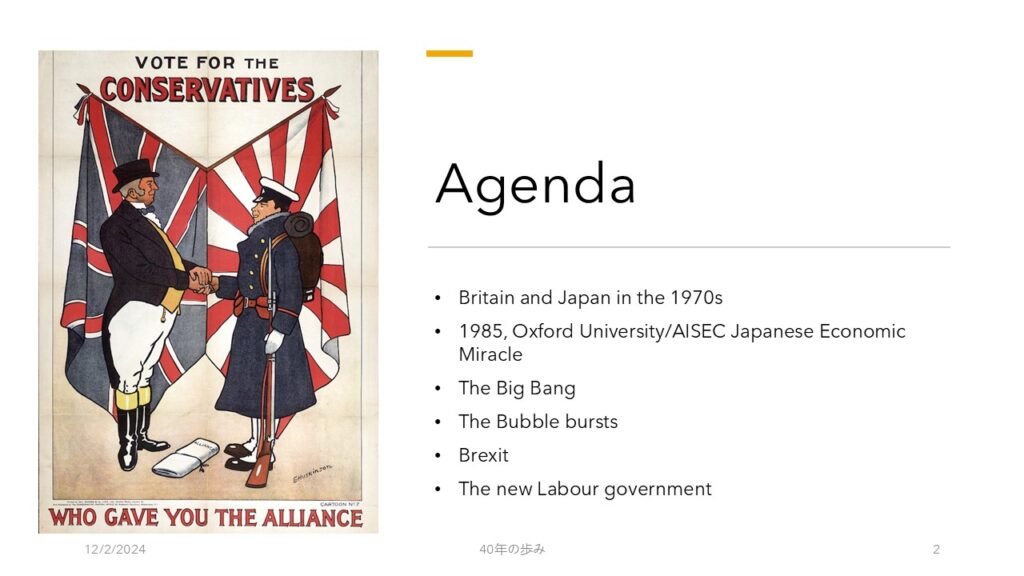Reflections on the past forty years of Japanese business in the UK – what’s next? – 6
(continued from part 5)
The Japanese Miracle was the title of a conference held by AISEC at Oxford University in December 1985. Japan’s economic success was beginning to be noticed, but often as a threat, with books starting to appear such as Japan as Number 1 and American unionists smashing up Toyota cars.
I joined the organizing committee of the conference, but am unnamed in the programme you can see here, as I was only a fresher, so was mainly used like a runner on a film set. The programme is a great snapshot of the influential people in UK-Japan business and political relations who were guest speakers, and features a long list of Japanese and British corporate sponsors.
On the Japanese side, the list is dominated by consumer electronics manufacturers – Hitachi Consumer Products, Casio, Panasonic, Sony and Toshiba Consumer products. My generation had grown up as teenagers with the Sony Walkman, a Panasonic or Sharp double cassette deck, Hitachi TVs and Casio calculators. The Zaikai (Japanese financial community) are represented by trading companies such as C. Itoh (now Itochu) and Mitsubishi Corporation and Nomura and the Industrial Bank of Japan. All of these companies still exist to this day – although the consumer electronics companies have shifted more to B2B.
Financial services companies featured heavily on the UK sponsor list, but very few have the same name or ownership structure as in 1985 apart from Barclays. Price Waterhouse is now PwC, Ernst & Whinney is EY, Touche Rosse is Deloitte. Austin Rover has become part of JLR, owned by an Indian company. British Steel is owned by a Chinese company. ICI was mostly acquired by the Dutch company AkzoNobel. Jaeger went bankrupt and is now just a brand owned by Marks and Spencer. The only company that remains pretty much as it was in 1985 is J Sainsbury. To quote Napoleon again, Britain is indeed a nation of shopkeepers.
For more content like this, subscribe to the free Rudlin Consulting Newsletter. 最新の在欧日系企業の状況については無料の月刊Rudlin Consulting ニューズレターにご登録ください。
Read More